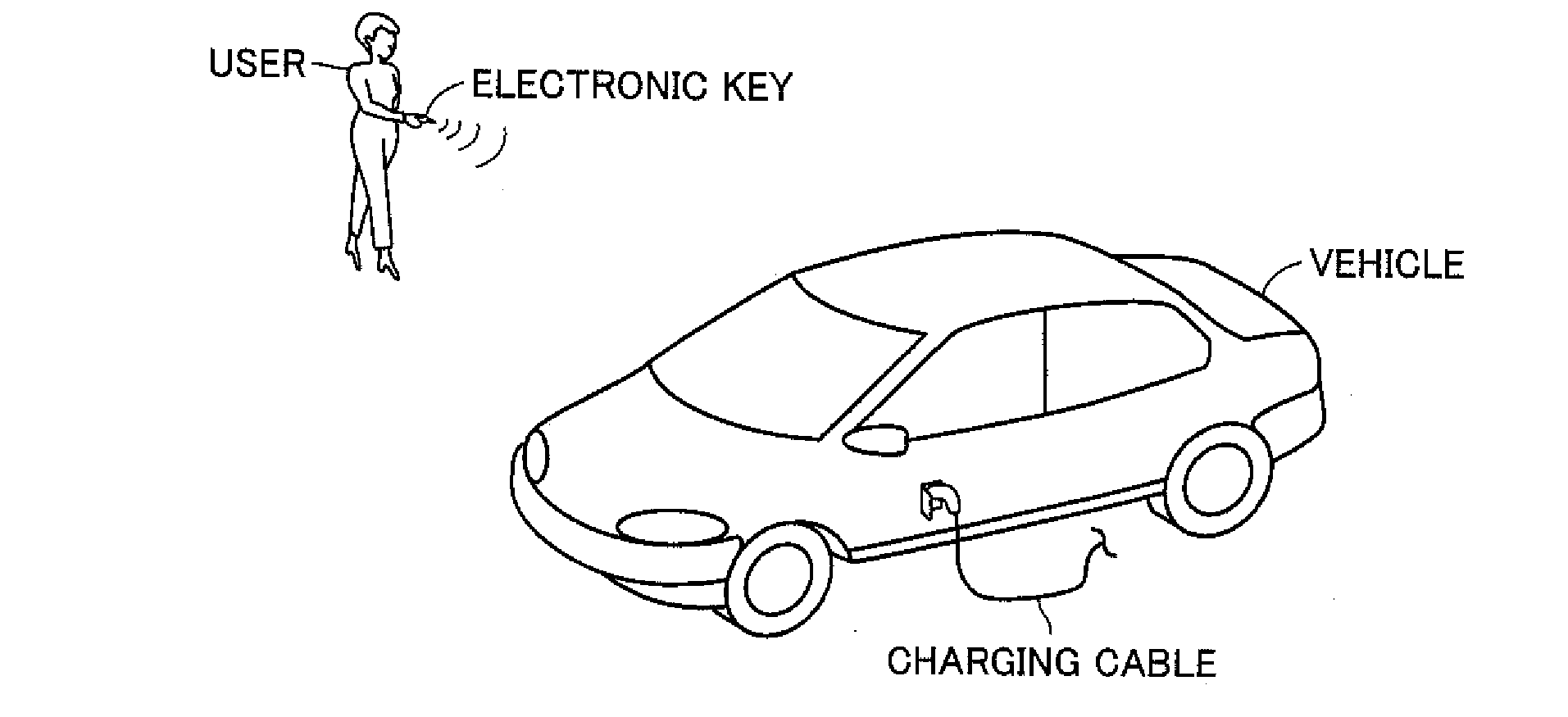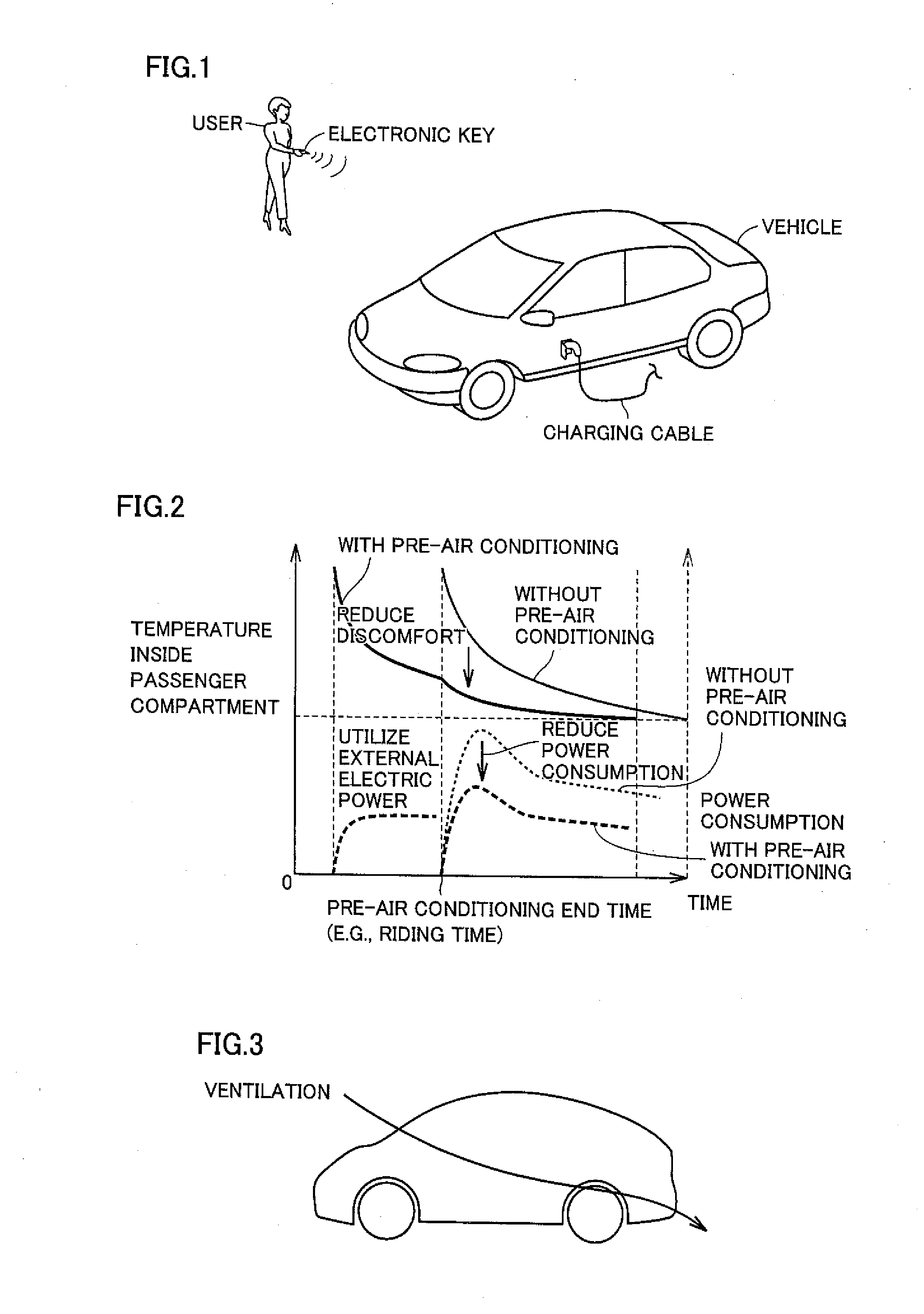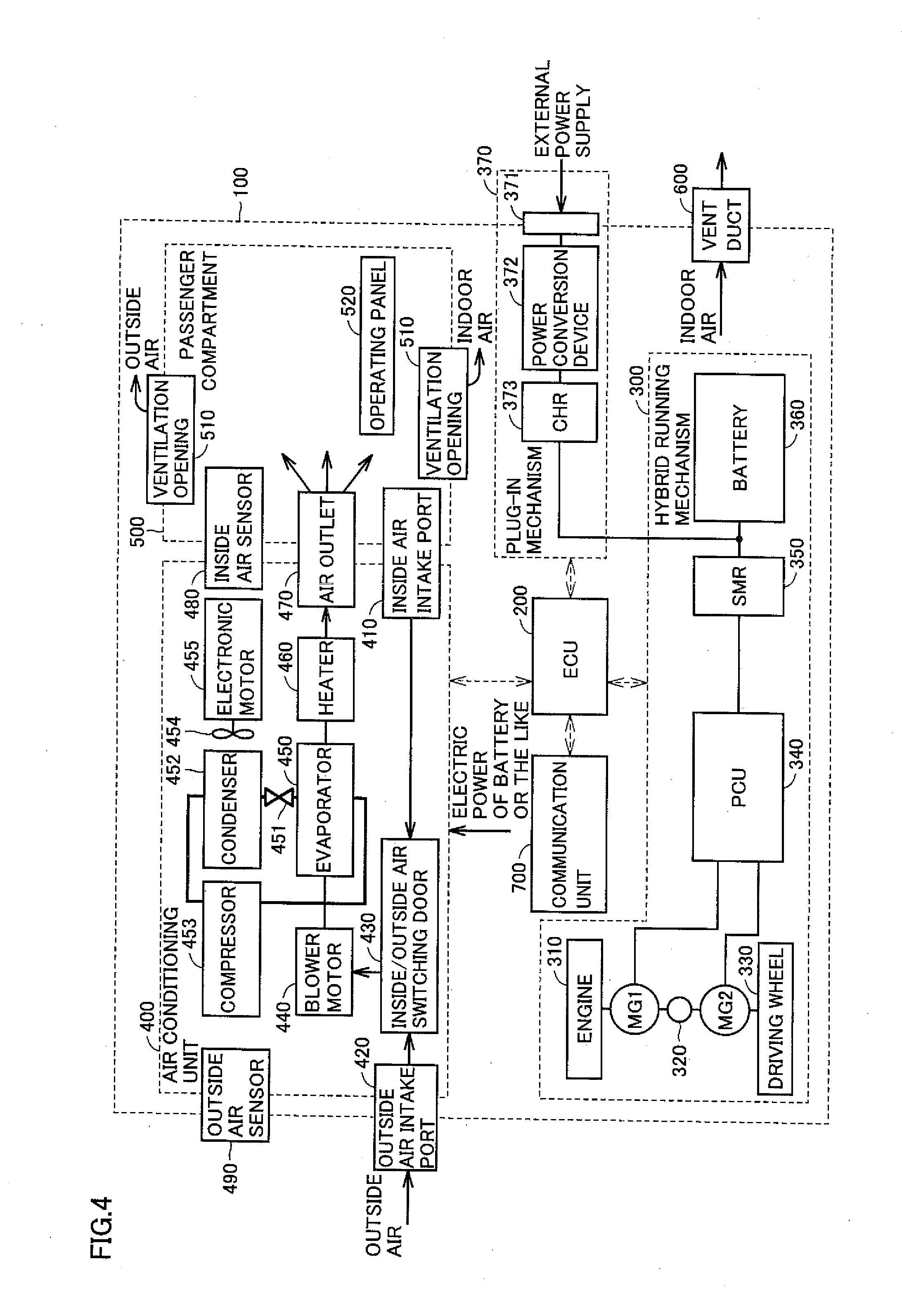Vehicle comprising air conditioning apparatus
- Summary
- Abstract
- Description
- Claims
- Application Information
AI Technical Summary
Benefits of technology
Problems solved by technology
Method used
Image
Examples
first modification
[0066]The user may specify a temperature (set temperature) of the pre-air conditioning by operating the electronic key, for example. When the set temperature is relatively low, it can be assumed that the user desires rapid cooling (with a high instantaneous effect). It is therefore preferred to perform air conditioning in consideration of the set temperature.
[0067]FIG. 7 is a flow chart for illustrating processing carried out in air conditioning in consideration of a set temperature. Since Step S201 in FIG. 7 is the same as Step S101 in FIG. 6, the description thereof is not repeated.
[0068]With reference to FIG. 7, it is determined in Step S202 whether the pre-air conditioning is to be performed or not. Where the pre-air conditioning is to be performed (YES in Step S202), the processing proceeds to Step S203. On the other hand, where the pre-air conditioning is not to be performed (NO in Step S202), the processing proceeds to Step S206.
[0069]In Step S203, it is determined whether th...
second modification
[0071]The user may specify a maximum time (set time) in which the execution of the pre-air conditioning is continued by operating the electronic key, for example. When the set temperature is relatively short, it can be assumed that the user desires cooling with a high instantaneous effect. It is therefore preferred to perform air conditioning in consideration of the set time.
[0072]FIG. 8 is a flow chart for illustrating processing executed in air conditioning in consideration of a set time. Since Step S301 in FIG. 8 is the same as Step S101 in FIG. 6, the description thereof is not repeated.
[0073]With reference to FIG. 8, it is determined in Step S302 whether the pre-air conditioning is to be performed or not. Where the pre-air conditioning is to be performed (YES in Step S302), the processing proceeds to Step S303. On the other hand, where the pre-air conditioning is not to be performed (NO in Step S302), the processing proceeds to Step S306.
[0074]In Step S303, it is determined whe...
third modification
[0076]The ventilation operation cools the inside of the passenger compartment by utilizing air outside the vehicle. Therefore, as the outside air temperature becomes relatively high, the effect of cooling by the ventilation operation becomes more unlikely to be obtained. It is therefore preferred to perform air conditioning in consideration of the outside air temperature.
[0077]FIG. 9 is a flow chart for illustrating processing executed in air conditioning in consideration of an outside air temperature. Since Step S401 in FIG. 9 is the same as Step S101 in FIG. 6, the description thereof is not repeated.
[0078]With reference to FIG. 9, it is determined in Step S402 whether the pre-air conditioning is to be performed or not. Where the pre-air conditioning is to be performed (YES in Step S402), the processing proceeds to Step S403. On the other hand, where the pre-air conditioning is not to be performed (NO in Step S402), the processing proceeds to Step S406.
[0079]In Step S403, it is de...
PUM
 Login to View More
Login to View More Abstract
Description
Claims
Application Information
 Login to View More
Login to View More - R&D
- Intellectual Property
- Life Sciences
- Materials
- Tech Scout
- Unparalleled Data Quality
- Higher Quality Content
- 60% Fewer Hallucinations
Browse by: Latest US Patents, China's latest patents, Technical Efficacy Thesaurus, Application Domain, Technology Topic, Popular Technical Reports.
© 2025 PatSnap. All rights reserved.Legal|Privacy policy|Modern Slavery Act Transparency Statement|Sitemap|About US| Contact US: help@patsnap.com



